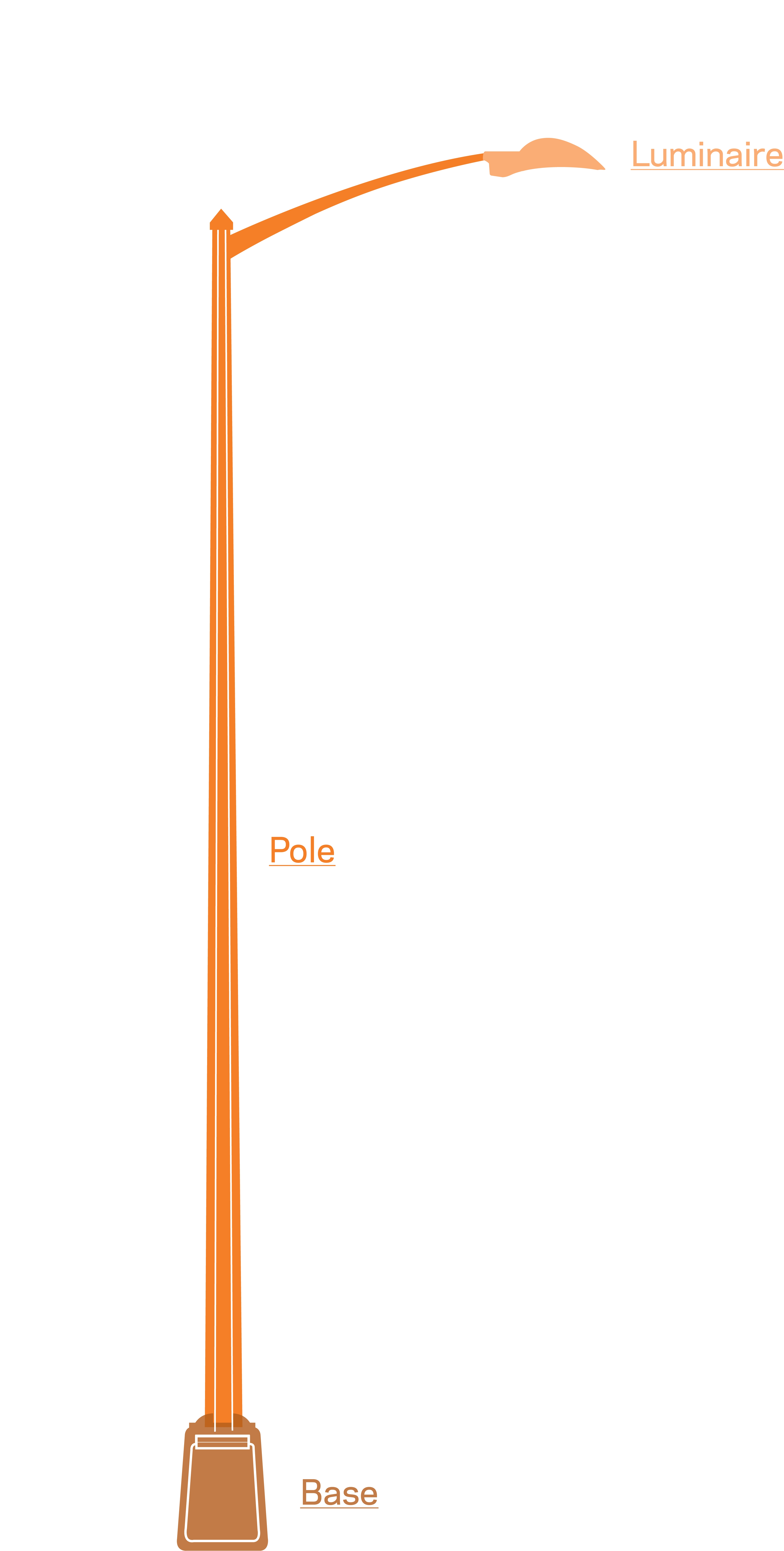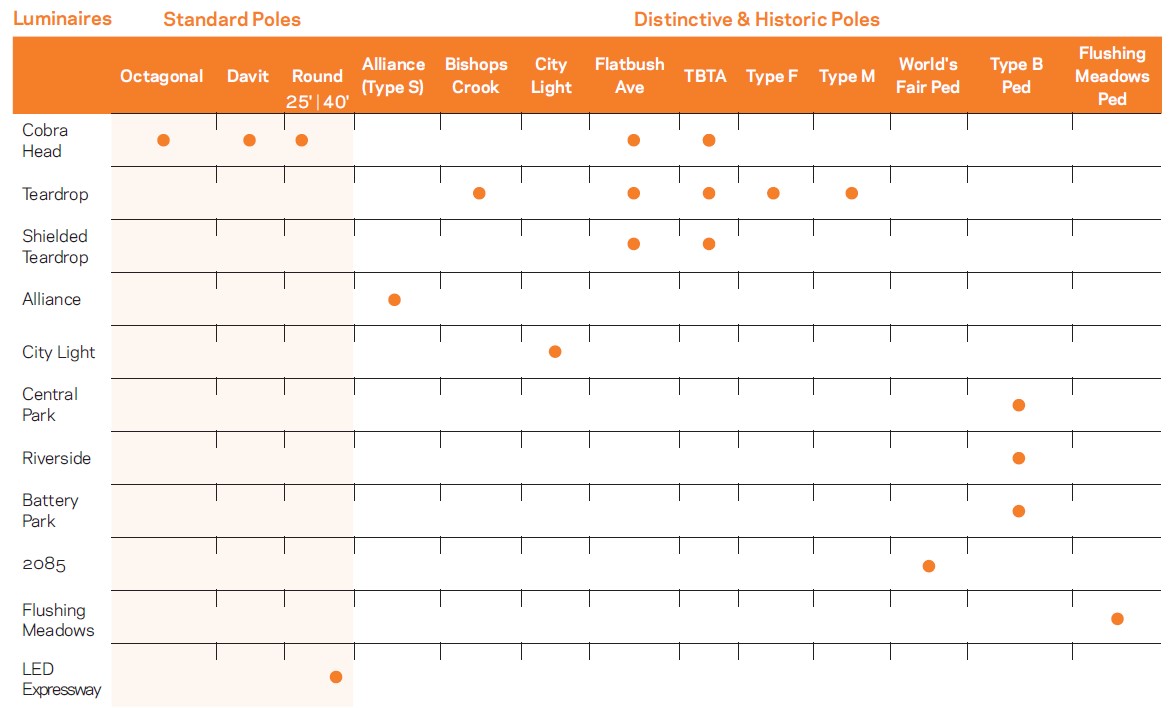

Inclusive Design
Street lights and signals at corners must be sited so that they do not obstruct pedestrian ramps, ensuring sufficient access to the sidewalk for all pedestrians, including those using mobility devices. At crossings, the height of Accessible Pedestrian Signals must be reachable by a person using a mobility device, at a preferred height of 42 inches and a maximum height of 48 inches (see 2010 ADA Standards for Accessible Design).
Resiliency
Existing foundations at traffic signal locations in certain flood-vulnerable areas are being replaced with coastal storm foundations that incorporate a square concrete pedestal raising the electrical components above some flood depths. The city’s Climate Resiliency Design Guidelines [PDF] provide guidance on height. The pedestal is monolithically poured with the foundation. Raising the base of the traffic signals or street light poles reduces the chance that the electrical components of the poles will be submerged in salt water during future flooding events. Additionally, High Density Polyethylene (HDPE) conduit, a more cost-effective material that is not susceptible to corrosion from residual salt water after storm surge events, is replacing galvanized steel for all signal locations and street light locations in flood-vulnerable areas.
DOT is also testing solar-powered lighting at select locations in flood-prone areas. If these applications are successful, solar lighting could reduce the amount of time without street lighting after major flood events.
Specifications
For design criteria, technical information, finishes, and color specification, refer to DOT’s Bureau of Traffic Operations, Division of Street Lighting specifications. The latest edition is available for purchase for $50 from the Office of the Agency Chief Contracting Officer, 55 Water Street, Ground Level, New York, NY, 10041. For further information, call (212) 839-9435. DOT Street Lighting's Standard Drawings Book [PDF] includes Standard drawings for elements in the lighting catalogue.
BUG Ratings
DOT Street Lighting evaluates LED luminaires using the IES BUG (Backlight, Uplight, and Glare) rating system as part of its specifications.
| Average Illuminance (fc) | Illuminance Uniformity | |
|---|---|---|
| Roadways | ||
| Collector* | 1.0 - 1.2 | 4:1 |
| Local** | 0.8 - 1.0 | 4:1 |
| Intersections | ||
| Collector/Collector | 2.0 - 2.5 | 4:1 |
| Collector/Local | 1.5 - 2.0 | 4:1 |
| Local/Local | 1.5 | 4:1 |
| Plazas, Under the El | 2.0 | 4:1 |
| Pedestrian Sidewalks | 0.6 - 0.8 | Up to 6:1 |
| Shared Bikeways | 0.8 - 1.0 | 4:1 |
**DOT's lighting division generally classifies cross streets as local roadways*DOT's lighting division generally classifies avenues and boulevards as collector roadways
Lighting Levels, Color, and Uniformity
DOT’s lighting-levels and uniformity guidelines are based on those established by the IES Roadway Lighting standard RP-8-14 (or more stringent where needed). DOT uses higher wattages on wide or commercial corridors and lower wattages on narrow or residential streets. DOT currently specifies 3000 Kelvin as the color temperature for all luminaires.
All street lighting designs must be approved by DOT Street Lighting Engineering Unit.
Notes and Symbols
| HDG | Hot Dipped Galvanized Steel |
| IES | Illuminating Engineering Society of North America |
| IES Type | IES classification of lighting based on its photometric properties. Five types are relevant to the city’s street lights: I, II, III, IV, and V. |
| LED | Light-Emitting Diode |
| SSL | Standard Street Light: Standard pole (Octagonal) with LED Cobra Head luminaire. While Davit and Round poles are also standard poles, cost comparisons to the SS refer to the Octagonal. |
| W | Watts |
| $ | Costs: Shown for each pole or luminaire as a $ symbol, representing relative costs compared to the Standard Street Light (SSL), the Octagonal Pole. A scale of one to five $ symbols is used rather than specific monetary amounts because actual costs are subject to change. |


